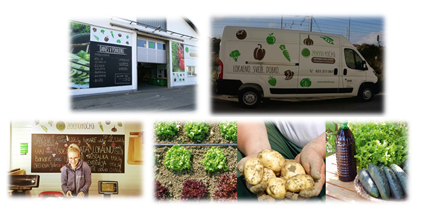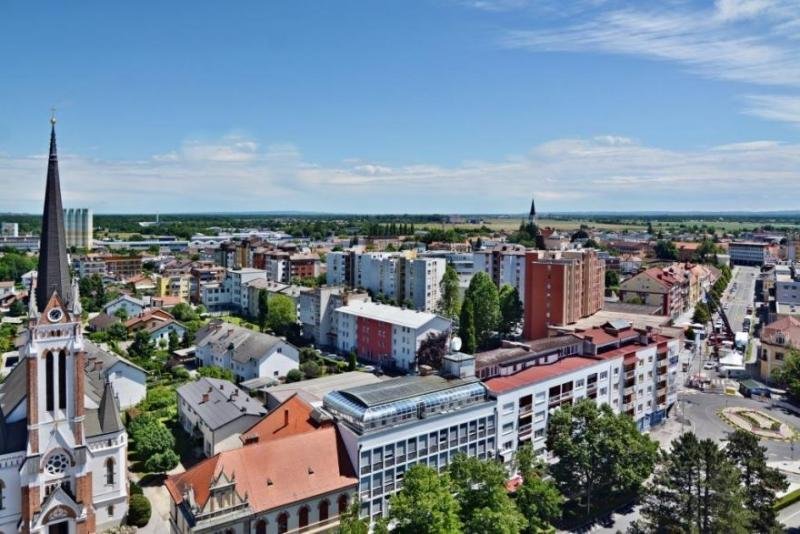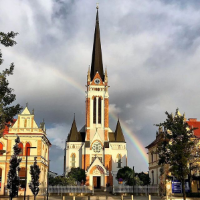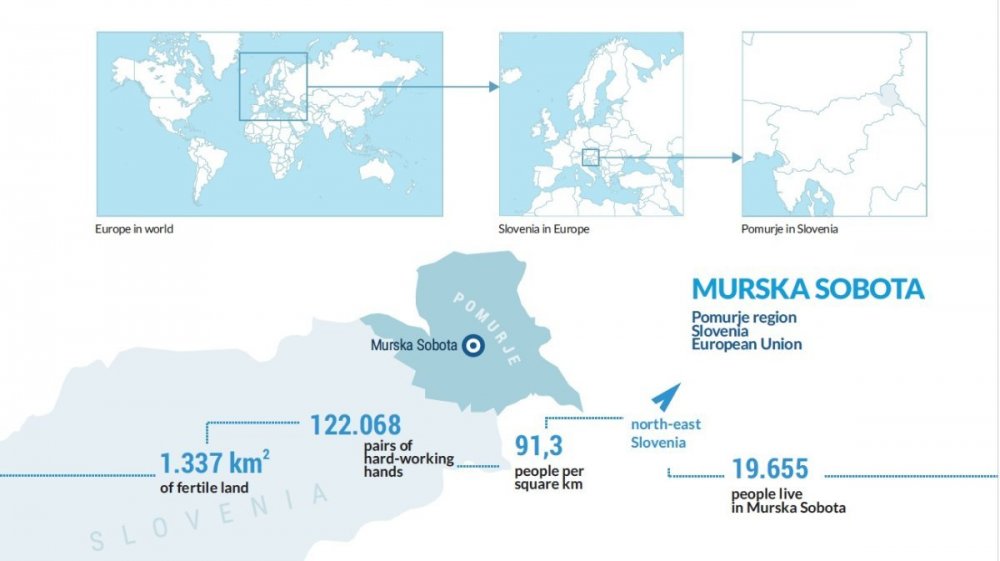Welcome page
About Murska Sobota:
Murska Sobota is the largest town in Pomurje and the northernmost town in Slovenia. It is a typical sub-Pannonian settlement at an altitude of 190 meters. It is located not far from the border with neighboring countries Austria, Hungary and Croatia. It developed in the plain world on the left bank of the Mura River. The name "Sobota" originates from Saturday fairs, and later the adjective "Murska" was added because of the Mura River. It is the administrative, economic, cultural, educational and health center of the Pomurje region.
Murska Sobota is the largest town in Pomurje and the northernmost town in Slovenia. It is a typical sub-Pannonian settlement at an altitude of 190 meters. It is located not far from the border with neighboring countries Austria, Hungary and Croatia. It developed in the plain world on the left bank of the Mura River. The name "Sobota" originates from Saturday fairs, and later the adjective "Murska" was added because of the Mura River. It is the administrative, economic, cultural, educational and health center of the Pomurje region.
The region of Pomurje is covering 1.337km2 of land and has 122.068 inhabitants (roughly 5% of Slovenian population). population). The region has preserved an unpolluted and untouched environment with vast fertile plains. At present sustained agriculture employs 8% of the working population. Among
the most prosperous industries there are textile, agri-food, metal-processing and chemicals. Pomurje is a typical rural area with villages spread around flat areas and small hills. It is the most important area in Slovenia for food production. The majority of farmers are small and specialized, focused on low-volume/ high quality produce. Farm tourism is very popular, i.e. farms, vine-shops and gastronomy.
The main needs of the region in terms of Smart Transition:
- New/smart technologies to be implemented for smart farming
- New/innovative (disruptive) business models following rural development goals
- New markets (customers) with higher profit margins, transformation to agricultural tourism
- Transition to eco-friendly, zero waste, healthy, socially responsible environment
Main geographic and economic features of the region:
- Typical rural area – villages spread around flat area and small hills
- The most important area suitable for food production in Slovenia
- Majority of farmers are small and specialized, focused in low-volume/high quality produce
- Farm tourism very popular (farms, vine-shops, gastronomy)
Why we are part of CITIES2030
City of Murska Sobota cooperates closely with Green Point (Zelena točka) Short Food Supply Chain (SFSC) incorporating more than 70 local farmers, food producers and cooperatives, covering the production process in greenhouse and open- air fields, with logistics from own distribution centre and different means of sales such as public bodies (schooling sphere, retirement homes), private (restaurants, health resorts), own retail stores and online shops. Green Point continuously implements innovative business models and technologies, to increase the proportion of local and safe food. The city also promotes local cuisine by implementing different events to increase visibility and raise awareness on local/healthy food.
GREEN POINT living lab acts in the area of Short Food Supply Chain (SFCS), based on fully deployed and functional SFSC called Green Point, located in Pomurje region (Slovenia). Its mission is to:
(i) empower cities and regions as agents of food system transformation by providing a demo-based environment for social change and
(ii) provide end-to-end technological and collaborative environment where SFSC actors and solution providers (SMEs, startups) could meet and use the living lab for systemic innovation in the areas of food production & processing, distribution, marketing, access and food consumption.
The Green point SFSC is continuously implementing innovative business models and technologies while actively contributing to increase proportion of local and safe food through awareness raising campaigns. Moreover, the GREEN POINT (under the umbrella of ITC) is providing innovation infrastructure to test technologies and demonstrate new value chains developed within the food supply, with Multi-Actor based approach, involving: policy makers, local governance, academia, business actors, food actors, consumers / consumer organizations, civil society and NGOs.

Last but not least, the Murska Sobota pilot will be supported by the digital innovation hub for agriculture and food production (DIH AGRIFOOD), managed by the ITC – Innovation Technology Cluster, thus it will be fully incorporated into the DIH AGRIFOOD service portfolio, especially into awareness creation, technology transfer and living lab environment-based services. Living lab ecosystem is one of the most important services provided by DIH AGRIFOOD, since agriculture is a traditional sector and farmers are even more cautious when implementing novelties into their production processes. This way they can observe, test, feel and touch the product/service within the living lab, before implementing it into their own operation.
Within the CITIES2030, Murska Sobota pilot will provide a solution for optimization of multi- stakeholder dialogue processes, in which blockchain will be employed to provide some proof of concepts of monetization processes, in a reliable and transparent way. This is in order to ensure transparency, traceability and trust of the local food production, blockchain technology (BC) presents the natural technology fit in the so-called SFSC.
Mid to long term strategic plan is to establish the ‘’Pomurje – Sustainable Rural Community’’, which shall build a system where farmers, food processing organizations, short food supply chains, retailers, and consumer organizations (restaurants, schools, elderly homes, kindergarten, ...) will be connected to an overall community based SFSC data collection, transparency, forecasting, monitoring and management IT infrastructure / system. Development and implementation of such a complex system will be directly supported and coordinated by the DIH AGRIFOOD, making sure that the approach will follow participatory, Multi-Actor Approach (MAA), where all relevant food supply actors and consumers are joined in the co-creation process (Living lab principle).
In such a community, decision making, systemic innovation, optimization of food supply chains, development of new value chains and support for policy makers will be driven by data collected from all food supply actors and third-party sources (Earth Observation, open data sources). Moreover, the DIH AGRIFOOD will implement a systemic innovation approach on the successful legacy of DIH AGRIFOOD services, which include Innovation scouting, Technology transfer and development of Living lab environment, where all stakeholders work together on ‘’interconnected innovations’’.





